Kungsträdgården in Stockholm is a beautiful park where people stroll, have coffee, listen to concerts and take part in various happenings. Once upon a time it was very different. When the Makalös Palace was located here, the park was a fenced-in garden for the court only, protected by armed guards.
Table of contents
Kungsträdgården in Stockholm
Kungsträdgården, also known colloquially as Kungsan, is, together with Humelgården, the oldest preserved public parks in Stockholm. The park can be said to consist of three 'rooms':
- The northern room with the large Forum Dam, surrounded by water features and magnificent bronze urns.
- The fountain room with the Molin fountain, hedges, trees and large flower beds.
- The classic city park with the tea house under the elms, green lawns and large flower beds.
Two avenues run along the sides of the oblong park, Jussi Björlings allé and Birgit Nilsson's avenue.
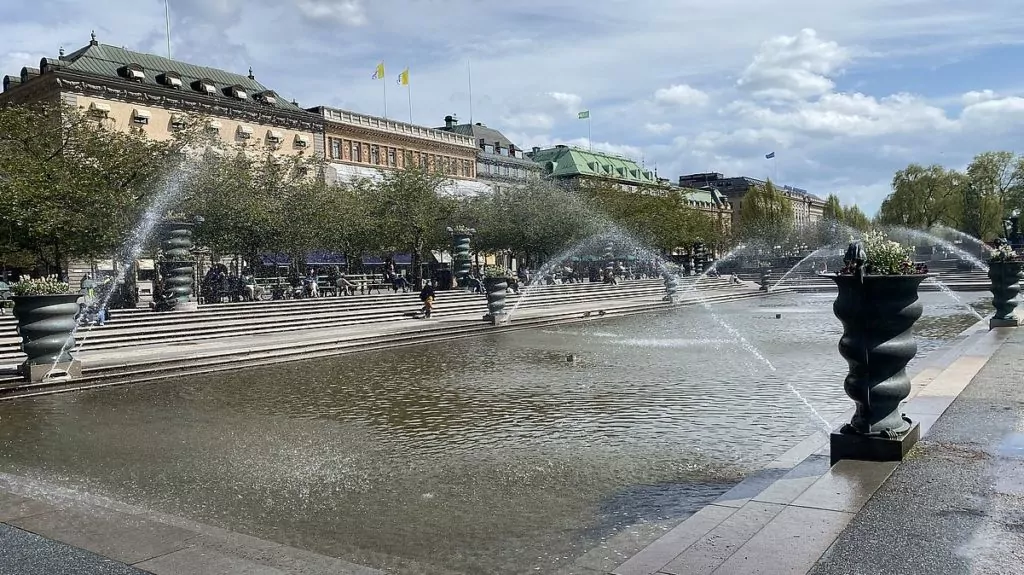
Kungsträdgården is located in the Norrmalm neighbourhood of Stockholm, less than 10 minutes' walk from Sergels torg. The nearest metro station is "Kungsträdgården".
Kungsträdgården - all times of the year
Kungsträdgården is perhaps one of the most popular places in the centre of Stockholm with both cafés and stages. There are always lots of people here, whatever the season. In winter, you can skate on an ice rink around Charles XII's statue. In spring, it has become a tradition to see the cherry blossoms. In summer, concerts, exhibitions and festivals are organised. We recently took a bike ride here, and took the opportunity to play tourist. Interesting!

Charles XIII: statue
In the centre of Kungsträdgården stands a statue of Charles XIII. It was designed by Erik Gustaf Göthe and erected in 1821 as a monument to the king.

Around it are four lions, as a symbol of power. The lions are each holding a paw on a sphere. On two of the balls are the three crowns of Sweden and on the other two the battle axe of Norway, as Charles XIII ruled both countries (the United Kingdoms of Sweden and Norway) from 1814 until his death in 1818.

Molin's fountain
In the spring of 1866, the sculptor Johan Peter Molin (1814-1873) was commissioned to create a fountain for the Great Stockholm Exhibition of 1866. The fountain was built in plaster and displayed as a central group in the Great Hall.
The fountain was a great success and a few years later it was also made in bronze, following a large national fundraising campaign. The fountain was unveiled in 1873, after Molin's death. The fountain is surrounded by six swans and is covered with figures from Nordic mythology: Näcken and Ägir with their wife Ran and their daughters Kolga, Hrönn, Himingläva, Unn, Duva, Blodughadda, Bylgja, Båra and Hefring.
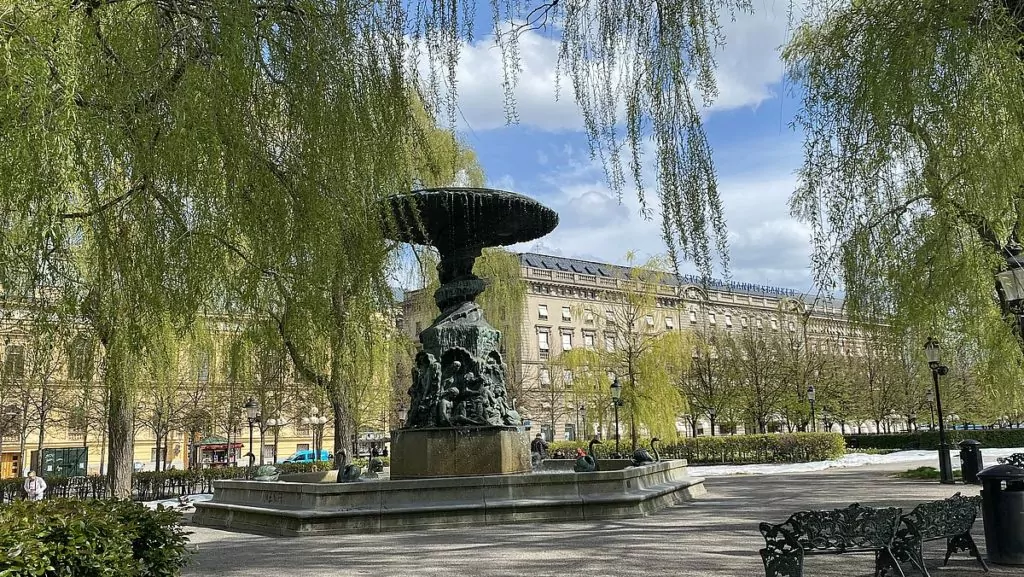
The teahouse under the elms - remember the 'Elm Battle'!
Just beyond the Molin fountain, under the large elms, is the Teahouse. Here you can relax with a coffee in a cosy environment, but above all you can remember the "Elm Battle".
The clash between protestors and police on 12 May 1971 had a long lasting impact. The politicians had decided to cut down 13 elms to build a subway entrance, but thousands of Stockholmers protested. Construction was delayed, the entrance was moved eastwards and ... the elms are still there!
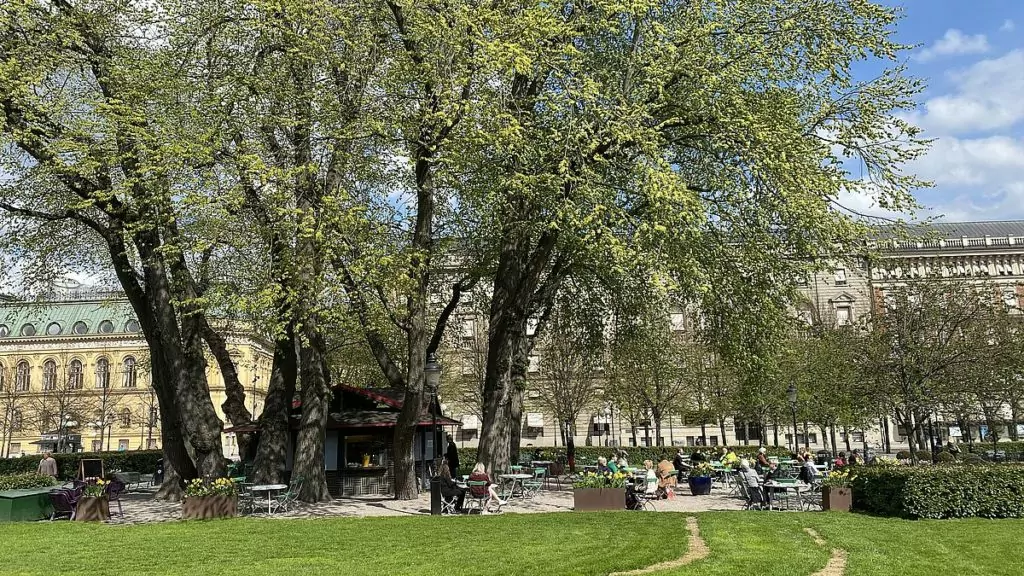
Charles XII: statue
The next statue in Kungsträdgården is the statue of Charles XII, which stands in the part of the park known as Charles XII Square. The statue was made by Johan Peter Molin, the same man who created the Molin Fountain.

Around the statue are four 'mortars', a type of artillery piece. The mortars were cast in Dresden in 1678, and were captured by Charles XII during the Great Northern War (1700-1721).
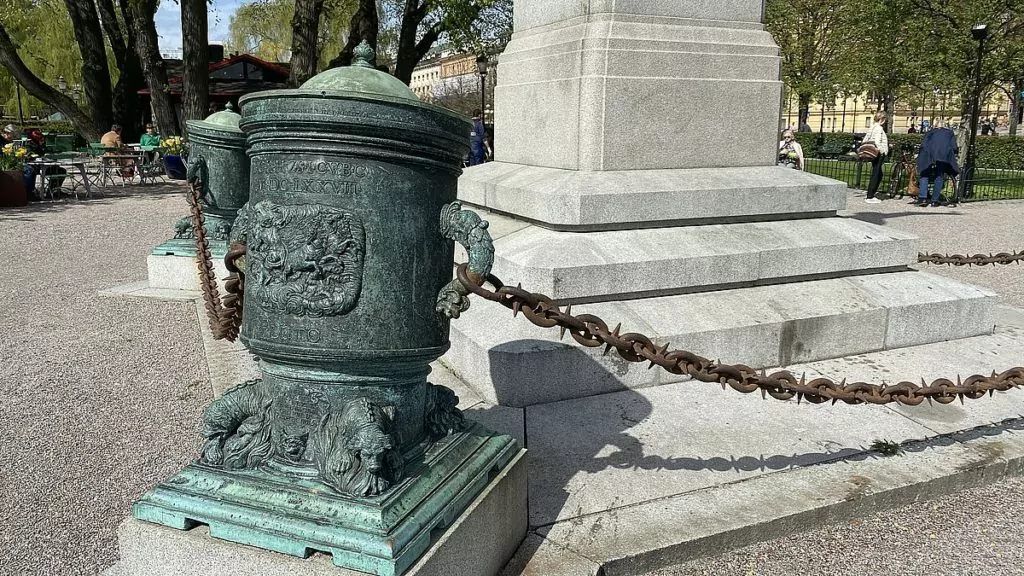
The Makalös Palace once stood here ...
Between 1635 and 1643, the De la Gardie Palace was built in the then new neighbourhood of Norrmalm. The palace was located where Karl XII's square is today, in the southern part of Kungsträdgården. The impressive building was commissioned by the Grand Marshal Jakob De la Gardie, and the palace was popularly known as 'Makalös'. The palace was Sweden's most famous and one of the most ornate private palaces in the Nordic region. So, what did the Makalös Palace look like?
- 5 storeys high, with a gazebo at the top.
- Copper roof with four towers
- Stairs down to the water
- Portals adorned with stone cannons
- Sculptures and decorative stonemasonry
- Ballroom and dance and music floor

When Charles XI reduced the entire site to the Crown in 1680, the building was converted first into a granary and then an arsenal and armoury. In 1793, the palace was converted into the premises of the Dramatic Theatre, commissioned by the "theatre king" Gustav III.
In 1825, the entire house burned to the ground. The violent fire occurred in the middle of a theatre performance, but despite a narrow exit, the audience managed to escape. However, three of the servants lost their lives.

Floral splendour in Kungsträdgården
In Kungsträdgården there are also plenty of flower beds and flowers in all sorts of colours and shapes. Beautiful!




Impressive buildings in the neighbourhood of Kungsträdgården
Located in the heart of Stockholm, Kungsträdgården is surrounded by various grand and famous buildings. Here are some of them:
Church of St James
St James's Church is located on St James's Square just next to Kungsträdgården. Construction of the beautiful red church began in the 1580s and, after various delays, was completed in 1643.

Grand Hotel
Grand Hotel is located on Blasieholmen, a short walk from Kungsträdgården. This 5-star luxury hotel attracts celebrities and has several famous restaurants.

Royal Opera House
The Royal Swedish Opera, or Operan as it is commonly known, is located between Kungsträdgården and Gustav Adolfs torg. Founded in 1773, it is Sweden's national theatre for opera, ballet and modern dance.
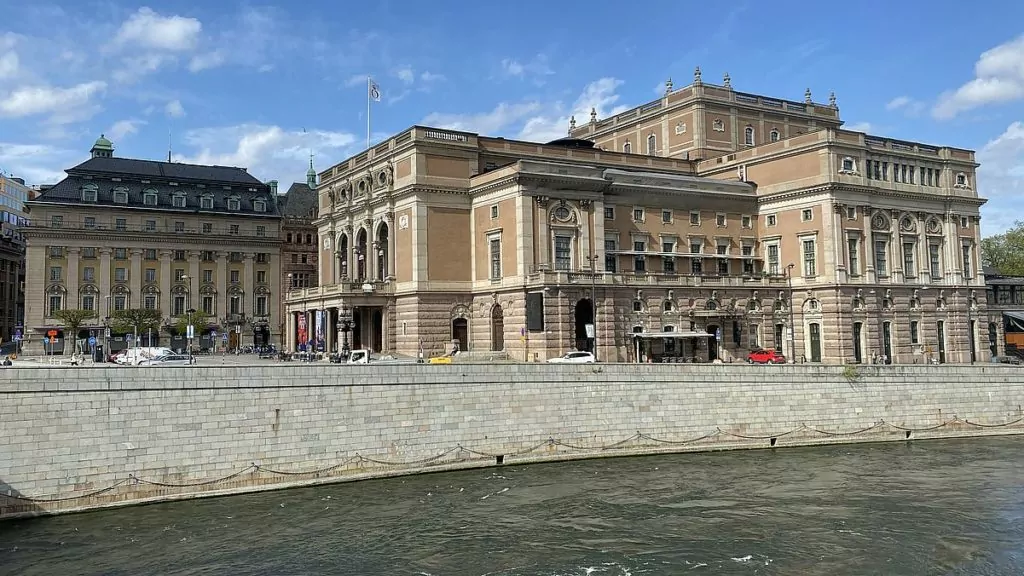
The Royal Palace
The Royal Palaceor Stockholm Castle, has existed on the same site, at Norrström on the north-eastern island of Stadsholmen, since the second half of the 13th century. The current castle was founded in 1697.

House of Parliament
The Riksdagshuset is located on Helgeandsholmen, overlooking the Opera House and the Grand Hotel. The building is the seat of the Swedish Parliament and was originally built between 1897 and 1905. Helgeandsholmen is also home to Museum of the Middle Ages.



Gustav Adolf Square
Gustav Adolf Square, named after Gustav II Adolf, is located right next to the Opera House. Here you will find a large statue of Gustav II Adolf. Right next door is Mediterranean Museum.

Rullsands camping and sea baths
Rullsands camping is a nice campsite outside Gävle. The location of the campsite is very nice and...
Rydboholm Castle in Roslagen - and the English Park
Rydboholm Castle in Roslagen is a private castle from the 16th century, and next to the castle is the...
30 different things to do in Stockholm
Looking for different things to do in Stockholm? Then you've come to the right place! Here...
Excursions in Stockholm in times of coronavirus - 15 tips
Tips on 15 excursions in Stockholm in times of corona! Because yes, what do you do when you...
Kapellskär campsite in the Riddersholm nature reserve
Kapellskär's camping is beautifully located in the Riddersholm nature reserve, with the coast and the Åland Sea right outside. We...
Vikingabyn Storholmen - open-air museum in Roslagen.
Vikingabyn Storholmen is an open-air museum beautifully situated by Lake Erken in Roslagen. For a few...
Lötsjön and Råstasjön - nature in Solna and Sundbyberg
Lötsjön and Råstasjön, located in Sundbyberg and Solna respectively, are two beautiful lakes with...
Salsta Castle in Uppland - castle café, guided tours and ghosts
Salsta Castle is a beautiful baroque castle from the 17th century. We were fascinated by the beautiful building when...
Lövstabruk - ironworks dating back to the 16th century
Lövstabruk in Uppland is one of the so-called vallon mills in Sweden, a historic ironworks....
Solna church - and the beautiful Norra begravningsplatsen cemetery
Solna Church is a nice little round church from the 12th century. Adjacent to the church is Norra begravningsplatsen, which...
Lingnåre cultural reserve - historical trails in Uppland
Lingnåre Cultural Reserve is located on the Hållnäs peninsula in the municipality of Tierp. There are currently a total of 43 cultural reserves...
Ulriksdal Palace and Park - Royal Palace in Solna, Sweden
Ulriksdal Palace is one of the eleven royal palaces in Sweden, and offers a...
Gräsö in Roslagen - a scenic gem
Gräsö is a scenic island, located just outside Öregrund in Roslagen. The island is surrounded by...
Royal palaces in Sweden - 11 magnificent castles
Royal palaces in Sweden are the subject of today's article. Did you know that there are 11...
Väddö sea baths and camping in Roslagen
Väddö havsbad och camping på Väddö is a campsite with a sandy beach, surrounded by beautiful nature....
Pythagoras Industrial Museum in Norrtälje - step into history
The Pythagoras Industrial Museum in Norrtälje tells, in a very vivid way, about a piece of Swedish industrial history....
Nothing in Solna - is there anything there?
Writer: Helena Bergström Ingenting in Solna - is there anything there? Ingenting is an office centre...
Bogesund Castle in Vaxholm - and the Great Castle Tour.
Bogesund Castle in Vaxholm is a beautiful 17th-century castle located in the Bogesund countryside in Stockholm...
Wenngarn Castle in Sigtuna - castle park, café and history
Wenngarn Castle in Sigtuna is a beautiful castle, which was once built by Magnus the...
Grönsöö castle in Uppland - and a cosy free camping site
Grönsöö Castle is a fine 17th century castle on the island of Grönsö in Lake Mälaren, Uppland. In the summers, the...
Things to do in Norrtälje - 11 tips for the capital of Roslagen.
What can tourists do in Norrtälje? Norrtälje is an idyllic archipelago town with beautiful old...
Pampas marina in Solna - all you need to know
Pampas marina in Solna is a marina, where you will also find houseboats and a restaurant....
Karlberg Castle Park - jogging trails and attractions
Karlberg Castle Park is just a few minutes' walk from where we live. Yet it took several...
Skokloster camping - great waterfront on the Skohalvön peninsula
Skokloster camping (or Sånka camping as it seems to be called on the signs here) is located on Skohalvön...
Best restaurant at Arlanda? - we have tested La Girafe
Which is the best restaurant at Arlanda? There are of course several answers to this question...
What to do in Sundbyberg - 9 tips for cosy Sumpan.
What can you do in Sundbyberg? We have lived in Sumpan for many years, and...
Siggesta Gård in Värmdö - now with parking spaces
Siggesta Farm in Värmdö, outside Stockholm, is a rural hotel with conference facilities, outdoor activities, animals,...
Butterfly House in Haga - tropical climate, butterflies and sharks
Have you visited the Butterfly House in Haga? For us it was a long time ago, but now...
Skokloster Castle - magnificent baroque castle by Lake Mälaren.
Skokloster Castle is a magnificent baroque castle on Lake Mälaren. This is the largest private palace that...
Forsmark's mill in Roslagen - a poppy mill with a long history
Forsmark's mill in Roslagen is one of the many beautiful poppy mills in the area. Once...
Museums in Stockholm - guide to the city's best museums
Why not visit some museums in Stockholm? Sweden's capital city is one of the world's most museum-rich...
Bredsands camping in Enköping
Finally, we have a completely free weekend and the opportunity to go out with the motorhome ....
Albert Engström's museum in Grisslehamn, Roslagen.
The Albert Engström Museum is located in Grisslehamn in Roslagen and tells the story of the artist Albert Engström. Here...
Törnskogen nature reserve - lost twice in one day
Törnskogen Nature Reserve consists of Södra Törnskogen in Sollentuna and Norra Törnskogen in Upplands Väsby. Here...
"The whole journey" at Paul Taylor Lanthandel in Sundbyberg, Sweden.
We recently tested the 'Whole Journey' menu at the celebrity restaurant Paul Taylor Lanthandel in Sundbyberg. This is...
Filmstaden Råsunda in Solna - 100 years of film history
Filmstaden Råsunda is currently operating as a cinema, although it is currently closed due to...

What are your experiences or memories of the King's Garden? Did you know the story of the Makalös Palace?
Facts about Kungsträdgården in Stockholm
- Address: Jussi Björlings allé
- Owners: Stockholm municipality (since 1971)
- Restaurants and cafes: TGI Fridays, Bar Burger Café, P2 Wok Sushi, Catalana, Thelin's Grand Café and Tehuset.
- Read more: You can find more information about the park at City of Stockholm website
The history of Kungsträdgården in brief
- Older history: Garden on behalf of the royal family.
- 1635-1643: The Makalös Palace was built.
- 18th century: The public was given access to Kungsträdgården during the reign of Gustav III.
- 1772: The Vauxhall Orangery was opened as an entertainment centre for public balls and concerts.
- 1823: The Makalös Palace burned to the ground.
- 1866: The Stockholm Exhibition was organised here.
- 1875: The City of Stockholm took over the management of the park.
- 1953: In connection with Stockholm's 700th anniversary celebrations, an open-air stage, a catering building, a tea pavilion, a beer hall and some kiosks were built.
- 1962: A frozen ice rink was constructed.
- 1971: Kungsträdgården became the property of the City of Stockholm. In the same year, the 'Alm battle' took place
- 1987: The riots in Kungsträdgården.
- 1997-1998: Refurbishment to Aleksander Wolodarski's designs, in conjunction with Stockholm being the EU Capital of Culture, with a central pond and the planting of Japanese cherry trees.
Facts about the Makalös Palace
- Start of construction: 1635
- Completed: 1643
- Developer: Jakob De la Gardie
- Architect: Hans Jacob Kristler
- Status: Demolished by fire in 1825
Find Kungsträdgården in Stockholm
- Go for a walk: Kungsträdgården is centrally located and takes less than 10 minutes to walk from Sergels torg via Hamngatan.
- Underground railway: The blue line of the metro goes to Kungsträdgården, which is the terminus.



















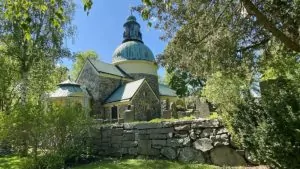



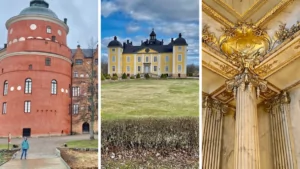














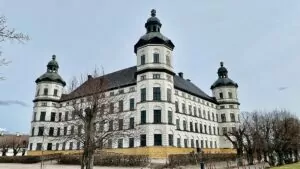







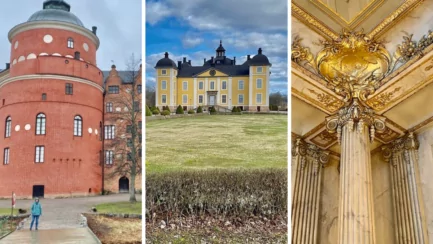




Ditte says:
Kungsan is always nice and so is the neighbourhood. Now the dte is also blooming so beautifully.
And the tea house a bit "cult". I remember it already from the 1960s when I was often here and it's funny that it still exists. Nostalgia! I worked as a guide in Stockholm in 1968 and our office was on Strömkajen. Tehuset, which was then called "Tetley", was one of our lunch spots, as was "Bakfickan" in the Opera House and the veranda at the Grand. (We had a discount) And sometimes a small beer in the lovely Cadie bar at the Grand.
26 May 2020 - 9:04
Helena says:
Glad we could offer a little nostalgia 😉 I have never actually visited the tea house, just passed by.
26 May 2020 - 20:10
Mr Nils-Åke Hansson says:
I haven't been to the Royal Opera since the late 60s. Not often you are in Stockholm now but very fun to see from the city.
26 May 2020 - 11:13
Helena says:
I have only visited the opera house once, I think, and that was a long time ago. There is certainly a lot to see in Sthlm!
26 May 2020 - 20:12
bmlarstravellingblog says:
Kungsträdgården usually gets a visit when we're in Stockholm, but we've never experienced the cherry blossoms or the beautiful spring blooms in the plantations.
26 May 2020 - 12:32
Helena says:
The cherry trees are beautiful when they bloom! This year we missed ...
26 May 2020 - 20:13
Ruth in Virginia says:
There wasn't much in Kungsan in the late 1940s.
Regarding the buildings you mention -Opera: used to go there often,
because it was cheap enough for an office rat like me to afford it.
to it.
The Grand Hotel was considered the spy centre of Europe during WWII,
Photos of present-day Kungsan show a wonderful place in the world.
the heart of Stockholm.
26 May 2020 - 15:22
Helena says:
Interesting that the Opera was a fairly cheap entertainment! And a spy centre!!!? Now I learnt something new, thank you for that 🙂 .
26 May 2020 - 20:14
BP says:
How often have I been in Kungträgården and passed everything you write about. However, as usual, I have never thought about the background. Now I know it too. Many thanks for an absolutely superb research job:-)
26 May 2020 - 20:27
Lena - good for the soul says:
I like to walk through Kungsträdgården and look at the plantings. A little mini oasis in the big city. But I haven't managed to see the cherry blossom.
I've never heard of that marvellous palace!
Hug Lena
26 May 2020 - 21:04
Lena in Wales says:
Nice post from Stockholm and Kungsträdgården, so nice.
Listened to a podcast about the battle of the elms, a good reminder of what we once knew.
Incomparable must really have been incomparable!
Thanks for the nice hike!
27 May 2020 - 9:12